[2024] Shopify vs GoDaddy for Ecommerce: Which is Best?
Shopify and GoDaddy are both names that are synonymous with the growth of online businesses but, until relatively recently, they operated in different areas.
Most people know Shopify as a leading ecommerce store platform, providing aspiring store owners with all they need to get set up and run a multi-channel online store.
And people know GoDaddy as the world’s largest domain name and website hosting company.
But those two worlds have collided with GoDaddy adding ecommerce store functionality to its platform. GoDaddy users can now easily create an online store out of the box, sell and ship products, and run marketing campaigns to promote them. This can all sync with offline, brick-and-mortar stores, too.
For some users, it’s longer a case of purchasing a domain name from GoDaddy but setting up an online store elsewhere. It can all be done from the GoDaddy platform.
But how do they compare? When we look at Shopify vs GoDaddy side by side for ecommerce, there are many differences. In this comparison, we look at how features, pricing, and support differ so that you can answer the question: which ecommerce platform is best for you?
Shopify vs GoDaddy: Background

GoDaddy started life in 1997, in Phoenix, Az. Founded by entrepreneur Bob Parsons, it’s now a household name with over 21 million customers, over 80 million domain names and more than 6,600 employees worldwide.
While GoDaddy has steadily added new strings to its service offerings over the years — beyond simple domain name registrations to hosting, websites, email and so on — it now appears to be ramping up its online store efforts.
The company has had an ecommerce service offering since 2015 but its latest offering is more advanced, providing a true out-of-the-box store builder solution.
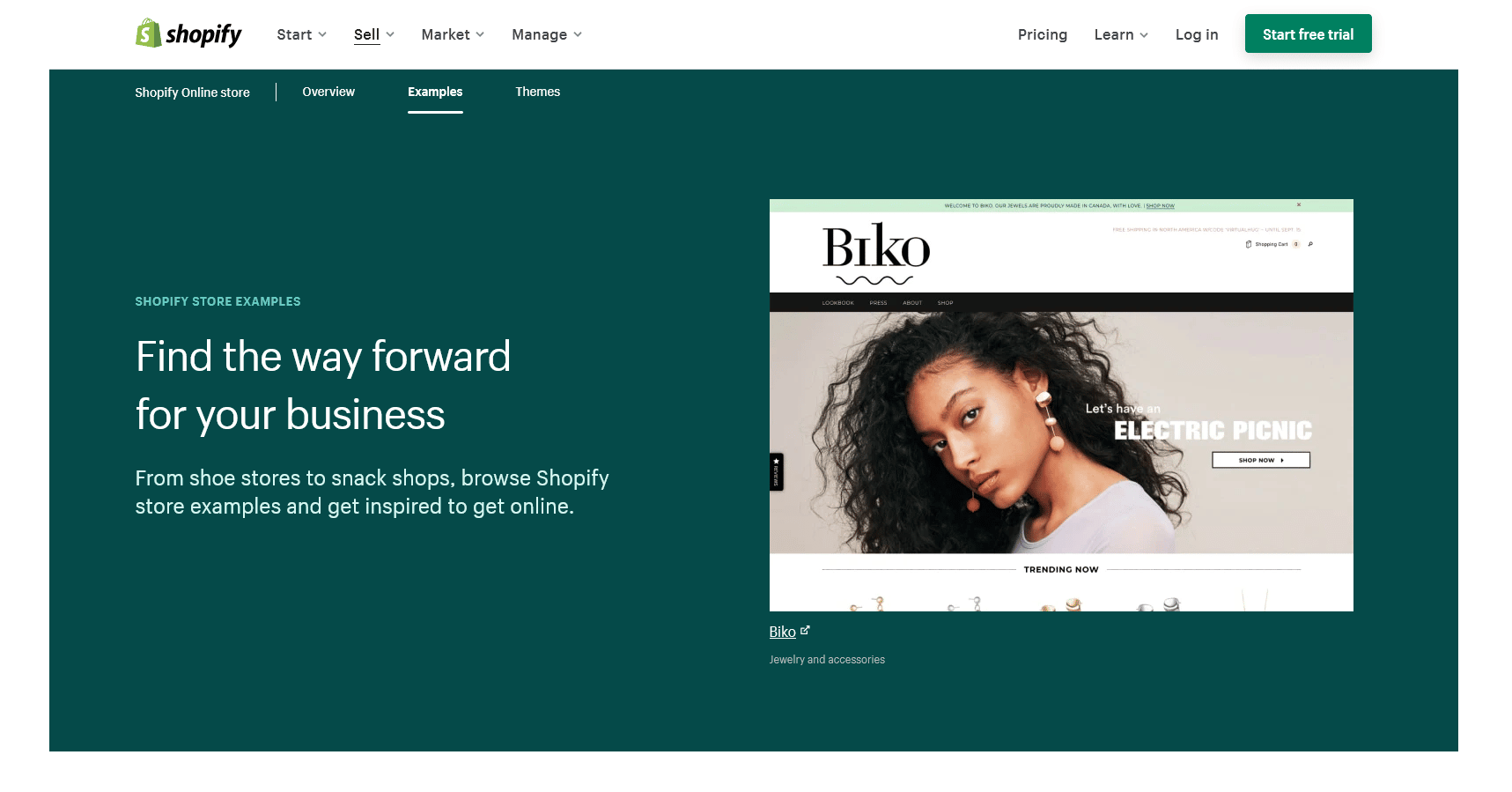
Shopify, on the other hand, has focused on ecommerce stores since its inception in 2006. That’s all it does. It was purpose-built from the ground up as a complete ecommerce solution for store owners with no coding expertise or team of developers at hand.
The platform saw phenomenal growth during the pandemic in 2020 and 2021 but even before then, it was ramping up its growth.
It’s now regarded as one of the best (and biggest) ecommerce platforms around, providing solutions not only for big brands like Heinz, Red Bull, Jenny Craig, Red Bull and Kylie Cosmetics but also for smaller boutiques, dropshippers and growing stores.
Shopify is now more than a simple store builder. It’s a true multi-channel solution provider integrating all sales channels into one convenient and centralized operating system and backed up with plenty of back-end management, alongside content creation and marketing tools.
Shopify vs GoDaddy: Market share
GoDaddy lays claim to over 41 million websites that use its services in some form, with around 17 million currently live websites and around 1.9 million websites using GoDaddy’s Website Builder product. It is a truly global player, operating worldwide.
However, when it comes to ecommerce, the GoDaddy Online Store has much more modest numbers.
Just under 4,000 live websites use GoDaddy Online Store — almost all in the U.S. UK, Canada or Australia.
By comparison, Shopify has over 4.1 million live stores across the world, including 2.7 million stores in the U.S. Over 21,500 of the world’s top one million websites and almost 400 of the world’s leading 10,000 websites use Shopify.
While a good proportion of Shopify platform merchants are based in the U.S., Shopify merchants are active in more than 175 countries.
Shopify vs GoDaddy: Main features
Ecommerce stores not only need to look good. They need to create a seamless shopping experience.
How do GoDaddy and Shopify shape up when we consider their standout features?
Standout features of GoDaddy
Seamless and affordable email marketing integration
GoDaddy allows 25,000 emails per month to be sent on its Premium/Commerce plans and 100,000 on its Commerce Plus plan. It also provides email subscriber sign-up forms and email list segmentation to aid with email marketing campaigns.
Fast and easy to use
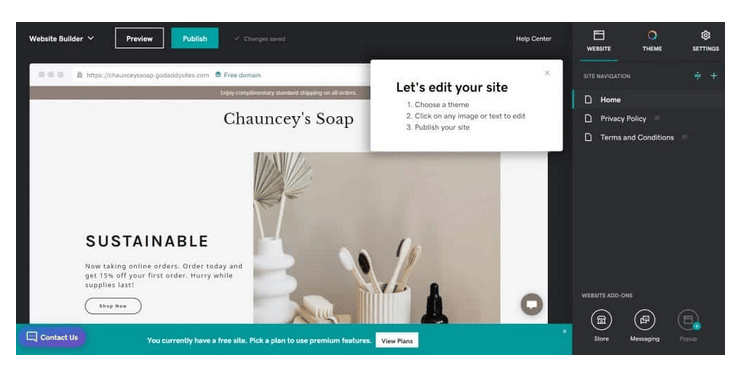
Few website builders are as easy to use as GoDaddy’s
GoDaddy’s editor allows easy click-and-edit customization of pages — you can add your own copy into any of the pre-loaded text boxes or add/delete a text box with a simple click. You can also easily drag and drop images from your computer and use the media uploader to upload them.
Free templates/themes
All templates available on the GoDaddy platform are free to use and come as part of the deal. Sometimes, with Shopify, paid themes are like paying a “hidden” setup fee.
Despite being free, GoDaddy’s templates are professional and stylish and you should be able to find the look and feel you want.
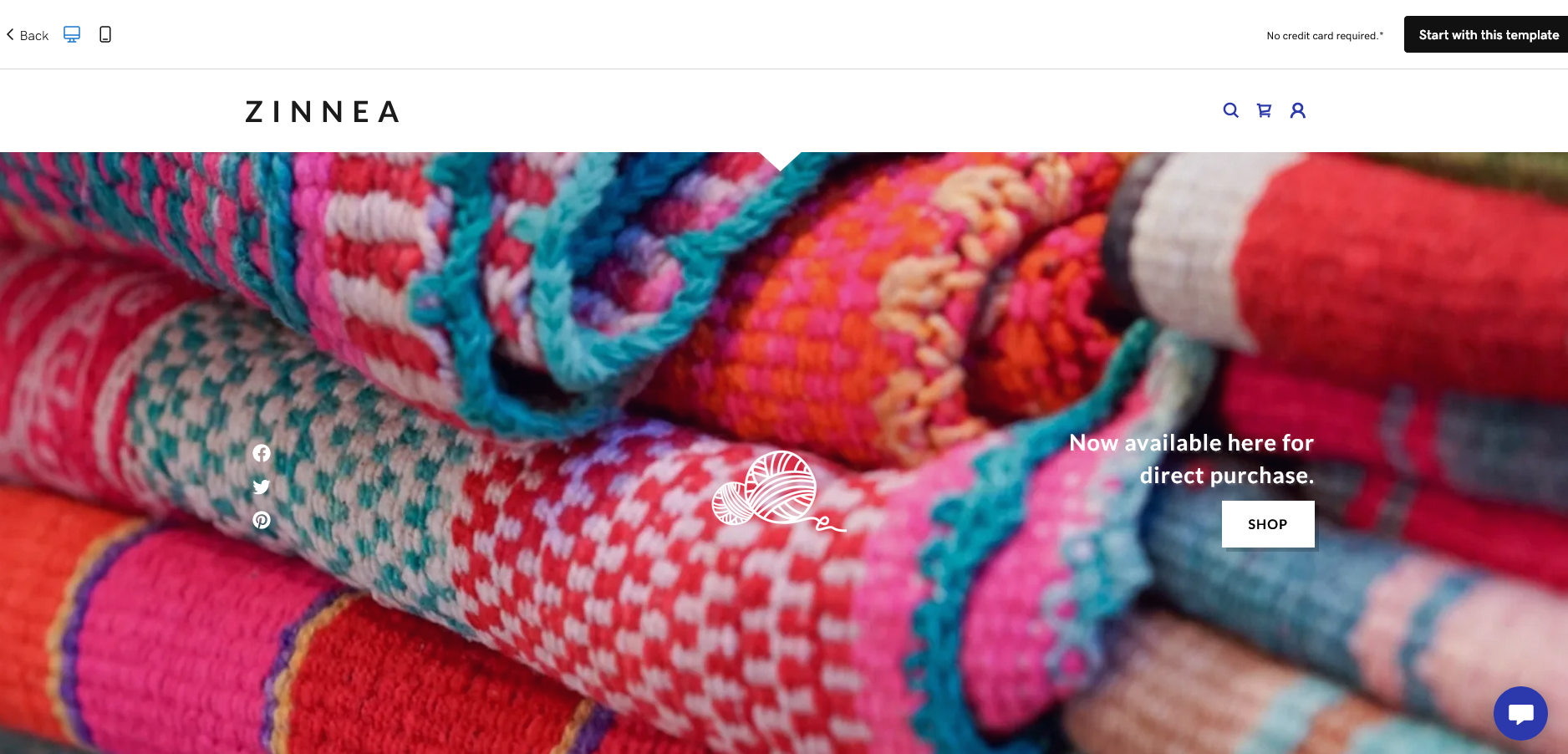
Partnership with WooCommerce
In 2019, GoDaddy announced a partnership with Automattic (the parent company of WooCommerce) to improve its ecommerce offering.
WooCommerce is a serious competitor of Shopify and we expect to see more developments between GoDaddy and WooCommerce to strengthen their ecommerce offerings.
GoDaddy’s managed WooCommerce Stores solution was announced as recently as December 2022, streamlining the process of managing a WordPress online store.
Standout features of Shopify
Advanced sales features
With Shopify, store owners can sell across multiple sales channels all from a single centralized hub.
It provides powerful opportunities for international cross-border selling online and all plans except the Starter plan provide a more sophisticated point-of-sale (POS) option than GoDaddy — with free hardware/software for offline stores and automatic inventory syncing.

Shopify’s social media tools make it easy to start selling on Facebook and Instagram, as well as Amazon, Walmart, Google, Pinterest, Snapchat, and in-person.
Integration with over 100 payment gateways, an impressive multilingual setup and the ability to sell in multiple currencies out of the box also aid international sales for stores with big ideas.
Search Engine Optimization (SEO)
Shopify allows almost complete freedom when it comes to your site’s SEO — you can configure URLs, redirects and page titles and you have tools to improve site speed (a key ranking factor).
The options with SEO are more advanced than with GoDaddy, where the Basic plan does not even give access to any of the main SEO features.
Integration with many apps
One of the main reasons to use Shopify is that it works well out-of-the-box — but beyond what’s in the box, there are plenty of tools to provide extra functionality if needed.

Access to over 6,000 apps on the Shopify app store provides help with everything from store design, marketing/conversion, and finding products to selling products, orders/shipping and store management.
Most are easy to install and many are free to use.
Quick-loading pages
Slow page loading times will damage the customer experience and ultimately, kill your store. Shopify store pages load fast and the platform provides a store speed report that can help you further optimize load times.
Multiple payment gateway options for customers
Shopify offers its in-built payment gateway (Shopify Payments powered by Stripe is available in 20 countries around the world) or integration with over 100 third-party payment gateways for accepting customer payments—from Google Pay to Bitcoin.
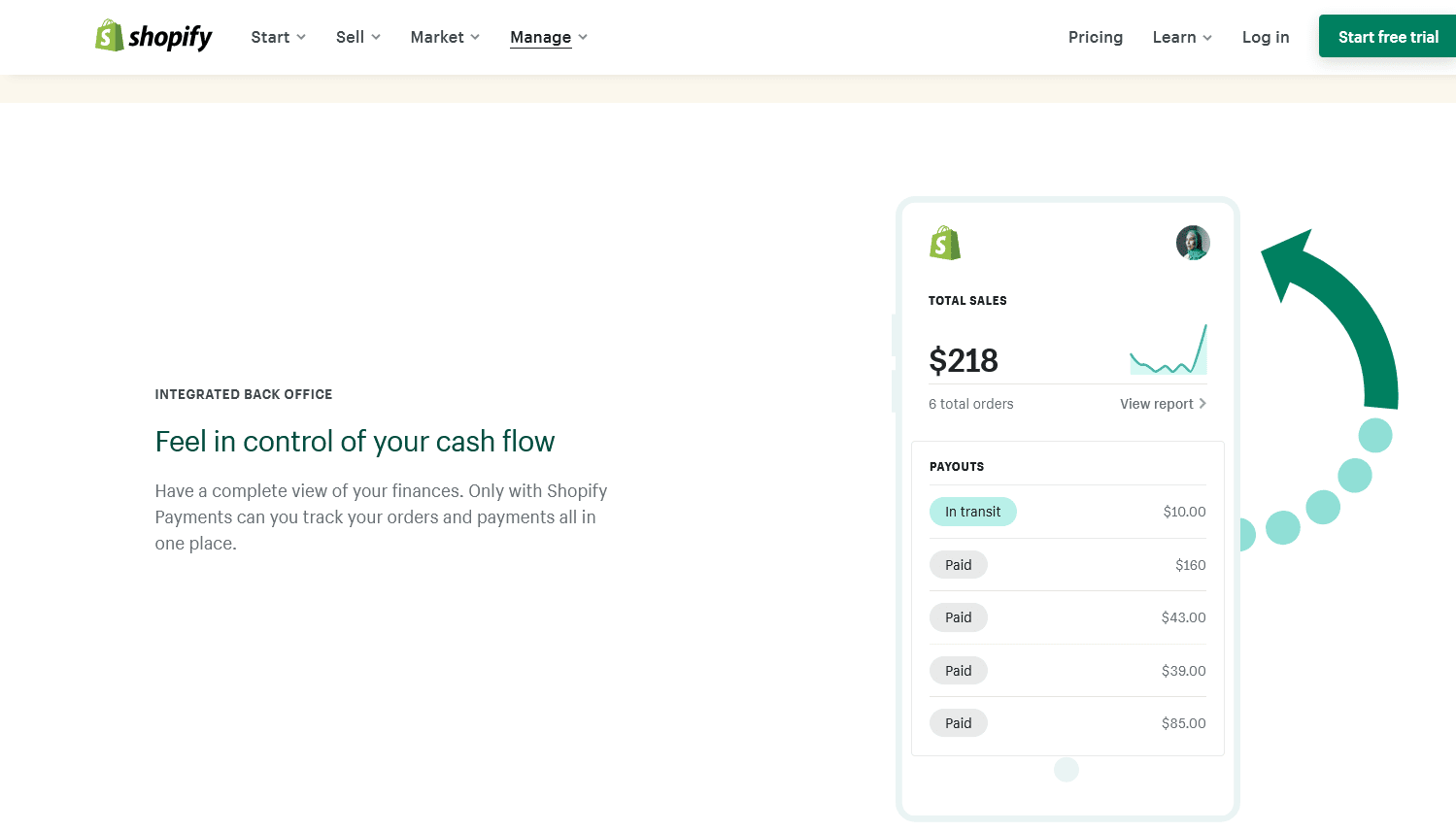
Shopify vs GoDaddy: Customer support
Shopify provides excellent 24/7 customer support by email, live chat and phone (available in most of its main markets) for all plans.
The Shopify system forces you to look for a solution to your problem from the online Help Center search resources before contacting a real person for support — a potential annoyance for some merchants.
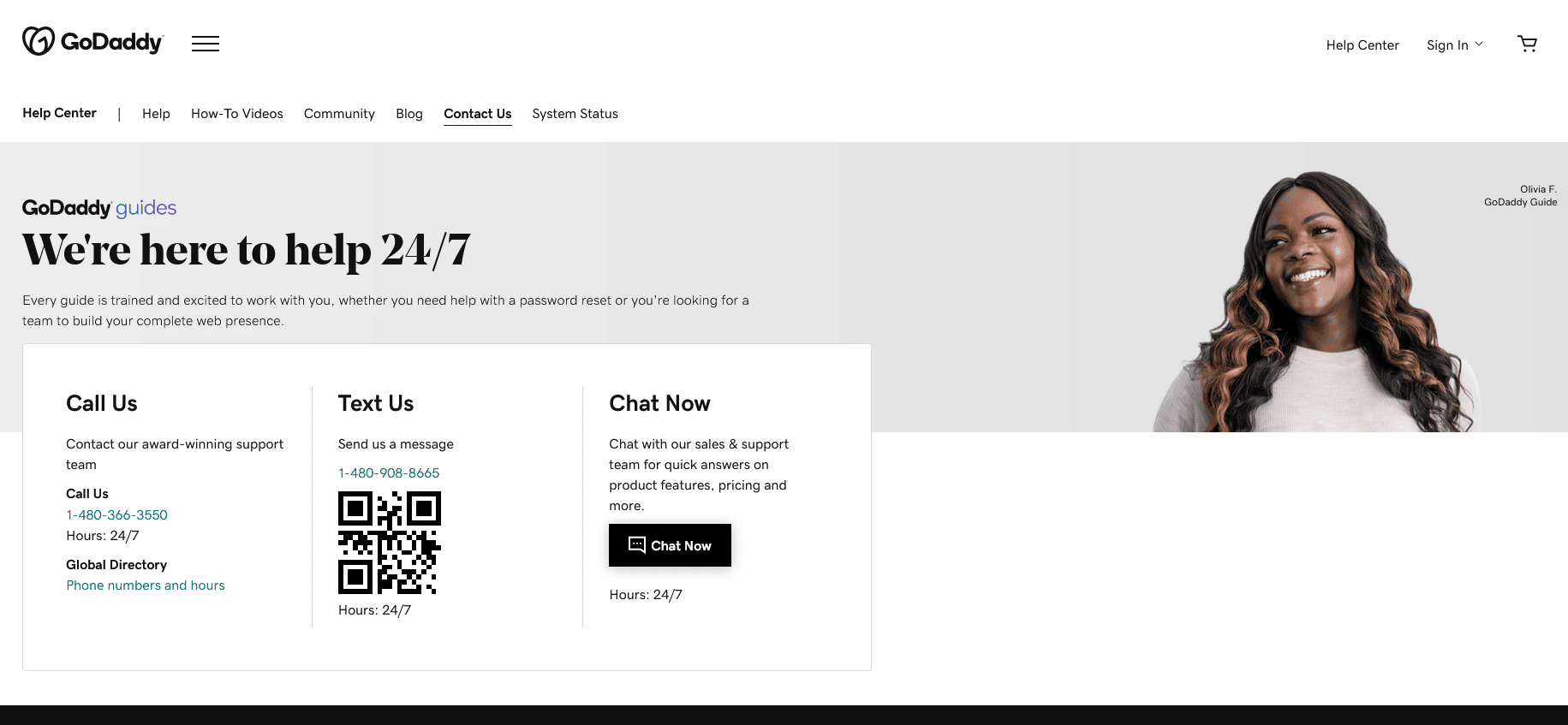
GoDaddy also offers the type of comprehensive support you might expect from a leading global internet company: live chat and phone support across all its plans, with phone support 24/7 in most regions.
There are also support accounts on Twitter and, WhatsApp (in some regions) and 24/7 SMS support in the US.
GoDaddy’s resource center includes video and article tutorials but the one problem with using these online resources is that there are so many GoDaddy products that it can be difficult to find precise information about the online store product.
Customer support may be one area of the Shopify vs GoDaddy battle where GoDaddy comes out on top.
Shopify vs GoDaddy: Pricing & Plans
When considering the costs of running an ecommerce store, there are monthly charges and additional fees to factor in.
Monthly fees
Shopify and GoDaddy both charge monthly fees but, unlike Shopify, GoDaddy offers a free mobile-friendly website option with support and marketing tools — but this has no ecommerce functionality.
To sell products online, you’ll need the Commerce or Commerce Plus plan. Here are the paid Website Builder plans currently offered by GoDaddy:
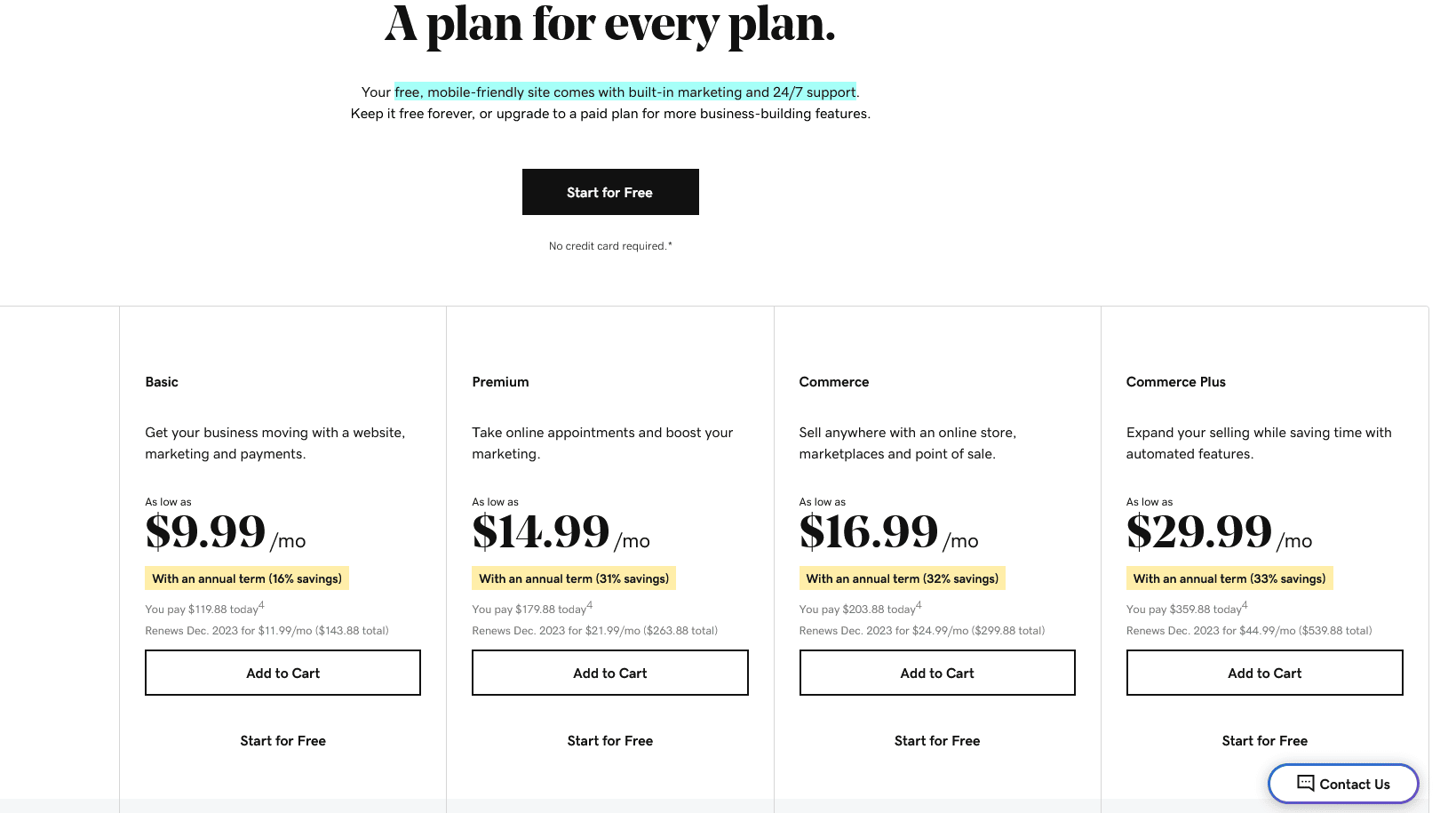
- Basic: $9.99/month
- Premium: $14.99/month
- Commerce: $16.99/per month
- Commerce Plus: $29.99/month
These prices are based on making an annual payment. The Basic plan renews 12 months later for $11.99/month, the Premium plan for $21.99/month, the Commerce plan for $24.99/month and the Commerce Plus plan for $44.99/month. So, effectively, GoDaddy offers a discount for the first year you commit to.
Shopify plans are more expensive and are detailed as follows (based on paying annually):

- Basic Shopify: $17/month
- Shopify: $44/month
- Advanced Shopify: $266/month
Additionally, Shopify provides alternative plans for beginners and enterprise clients:
- A Starter plan for $5/month that enables a Shopify “buy” button on an existing site or Facebook
- Shopify Plus plan starting at $2,000/month (enterprise clients)
All Shopify plans provide unlimited products. Products are limited to 5,000 with the Commerce account on GoDaddy.
There is no enterprise or custom version with GoDaddy and while point-of-sale devices are available, they cost extra (they are free with Shopify).
Note that only two staff accounts are provided with Basic Shopify. The Shopify plan provides five accounts and the Advanced plan up to 15.
Shopify offers a three-day free trial while you can try GoDaddy free for one month.
Additional fees
GoDaddy offers 100+ mobile-friendly designs for its website builder and you can start building your website for free (if you want the ecommerce features, you’ll need to upgrade to one of the appropriate paid plans).

With Shopify, there are currently only 11 free themes and 100 paid premium themes. The paid themes range from $200 to $300 from Shopify or around $30 to $100 from third-party sites.
Shopify Pay is available in 20 countries so there’s a good chance that you can avoid having to use another payment gateway. If you do use a third-party gateway, Shopify offers integration with over 100 gateways and charges additional fees of between 0.5 percent and 2 percent per transaction depending on your plan (plus credit card processing fees of 2.4%+30c to 2.9%+30c).
GoDaddy Payments charges a credit card processing fee of 2.3% + 30c per transaction — but this service is only available in the US. If you need to use a third-party gateway with GoDaddy. there are no additional GoDaddy charges but you are much more limited with the choices — and you’ll still pay the standard credit card processing fees using either PayPal, Stripe or Square.
The other pricing factor to bear in mind with Shopify is the additional cost of paid apps if you choose to extend the functionality of your store as many Shopify merchants do.
Shopify or GoDaddy for your online store?
Some solopreneurs and small business owners may consider GoDaddy for their ecommerce stores. The low monthly pricing is certainly an attraction — but this will need to be balanced with the clear limitations of the platform.
For most ecommerce business owners with ambitions of creating more than a basic store (or selling in more than one language and one currency), Shopify is the best option.
The flexibility and scalability of the Shopify platform are geared up to serve a wider range of businesses: from dropshippers to small-to-medium-sized ecommerce stores and larger enterprises.
Even if the $1/month Shopify deal has ended by the time you sign up, it’s still great value.
